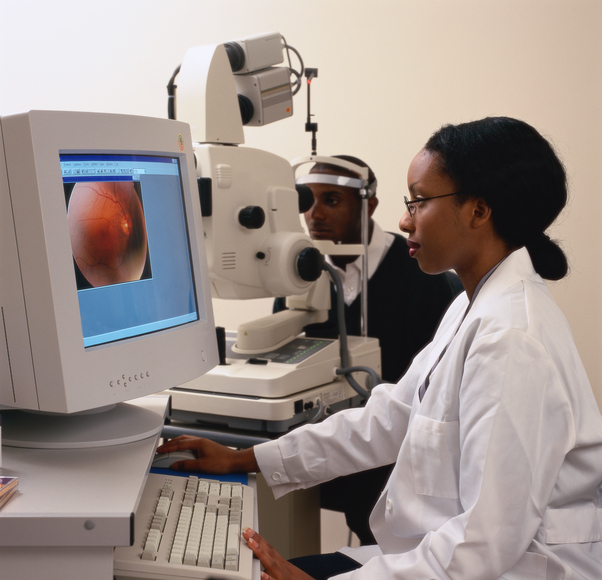
An optometrist specializes in diagnosing and treating medical issues involving the eyes and other parts of a patient’s visual system.
Optometry, like many professions in the healthcare industry, is growing and lucrative. According to the U.S. Bureau of Labor Statistics (BLS), optometrist was the 17th-best-paid profession in healthcare in 2016, with a mean annual salary of $117,580.
Unlike many healthcare professionals, optometrists often work on their own in an office. They also can work with in a mall-based or free-standing store where eye tests are given and eyewear is fitted and sold, or within a chain of physician clinics.
Working as an eye doctor requires a commitment to education and putting in many hours of clinical experience. But for the right person, it’s a richly rewarding career.
What Optometrists Do
Patients usually visit an optometrist for eye examinations. Eye doctors work with people who have less-than-perfect vision, developing a plan of treatment that includes finding the right prescription for glasses or contact lenses.
Others see optometrists to deal with diseases that affect the eye. In some cases, injuries have affected their vision. In all cases, optometrists know the proper tests to run and how to develop the right treatment plan for each situation.
In a typical week, an optometrist can expect to:
- Perform eye exams
- Write prescriptions for eye glasses, contacts or medication
- Correct minor eyes issues with surgery
Some optometrists focus on certain patient demographics, such as treating children or the elderly.
The Demand For Optometrists
As with many healthcare professions, there is a growing need for optometrists. The BLS projects a 17 percent increase in the number of optometrists in the period between 2016 and 2026. That’s much faster than the 7 percent growth projected for all professions.
The job growth is partly driven by the increased number of diabetes cases in the United States. Diabetes is linked to eye issues such as diabetic retinopathy. As more people are diagnosed with diabetes, more optometrists will be needed to treat them.
Steps To Becoming An Optometrist
Becoming an optometrist requires following a challenging educational path, as well as obtaining proper certifications and licenses. The following are the major steps.
Earn a Bachelor’s Degree
Most future optometrists earn a bachelor’s degree. Typically, the degree will be pre-med or in one of the biological sciences.
Earn Acceptance To Optometry School
Entry into optometry school requires passing an entrance exam called the Optometry Admission Test. Much like a GMAT score, the score from the OAT is part of a student’s submission to optometry school. Students are tested in science, reading comprehension and quantitative reasoning, among other areas.
Doctor of Optometry Program
Earning a doctorate in optometry requires four years of coursework at a specialized optometry school. Some optometrists will choose to specialize in pediatrics, geriatrics, ocular diseases or other specialties within the profession.
Residency and Licensing
Most optometrists also have a one-year clinical residency after earning a doctorate.
Before starting is or her own practice, an optometrist must first earn a license by passing an exam. All states require this. The licensing program is run by the National Board of Examiners in Optometry. The license must be renewed periodically throughout an optometrist’s career.
Optometry is a field that attracts high achievers who are driven to work in such an important, specialized field. The path to becoming one is difficult. However, it’s a great career choice for those with an interest in helping others manage vision disorders.









